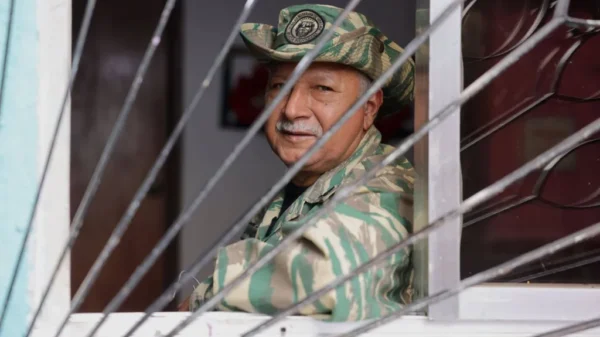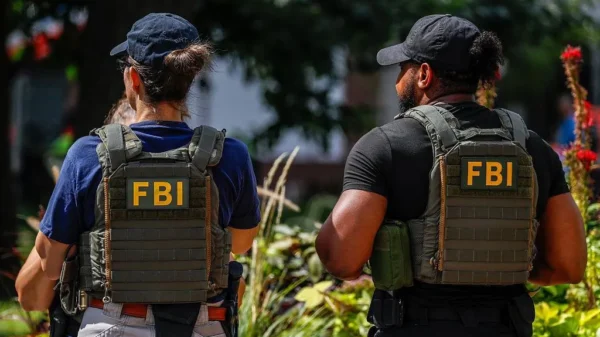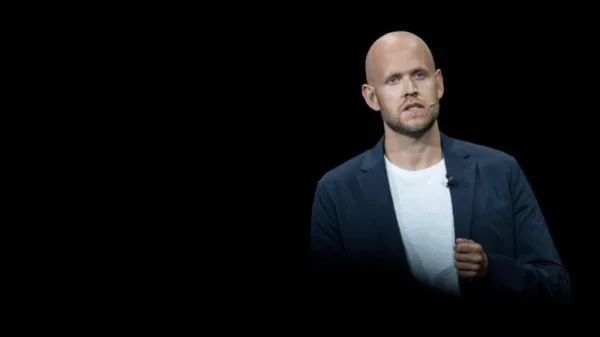The Commemorative Air Force in the US flies the only two airworthy Boeing B-29s, the most expensive weapon of World War Two. One pilot tells BBC Future what it feels like to fly them.
They are two of the most celebrated aircraft still flying today. The two Boeing B-29s flown by the Commemorative Air Force (CAF) in the US are the last airworthy examples of nearly 4,000 built in the mid-1940s, the largest bomber in the world at that time and a design which pushed aviation technology to the limit.
The aircraft, nicked “Fifi” and “Doc” by the CAF, take part in airshows across the US during the summer, where aviation fans can pay to ride along in 30-minute-long demonstration flights.
The Boeing B-29 was the most advanced bomber in the world when it entered service in 1945: it was the first mass-produced aircraft to have pressurised compartments for the crew, and it could fly higher and further than any other aircraft thanks to its four enormous engines. These engines also helped it fly almost as fast as the fighter planes of the time. Designing and building it cost more than the atomic bombs that B-29s would eventually drop on Japan to end World War Two.
Bringing the B-29 into service was a colossal industrial project that at times overwhelmed Boeing. Its engines were powerful but temperamental, and keeping them in line required the full-time attention of a dedicated flight engineer, who kept a beady eye on engine temperatures to avoid the engines catching fire from overheating. Even getting a B-29 airborne for its mission over Japan required great effort in the humid air of tropical airfields. So, 80 years after the B-29 helped bring the world’s most costly conflict to a close, what is it like to fly one now?
Randall Haskin, 52, is one of the lucky few who knows. When he isn’t flying freight planes for one of the world’s biggest delivery companies, he swaps an airliner’s seat for the rather more intensive controls of “Fifi”.
“Flying the Superfortress is like leadership by committee,” says Haskin over Zoom from his home in Las Vegas. “I have a flight engineer who’s responsible for essentially all manner of engine operation and management. In the world of professional flying, it’s normal to have two pilots interacting with one another. But now to have a flight engineer who is the key component of all aspects of engine operation makes being the pilot in command a leadership exercise.”
The flight engineer’s job was vital in a B-29 because there was no way the pilot or co-pilot could monitor the engine readings at the same time as doing everything else needed to get the aircraft into the air. “Think about when you first learn to drive, and think about when how you drive now, you make inputs with your foot on the accelerator all the time, and you don’t think about how much or how little you’re pushing,” Haskin says. “You’re just simply looking at either the speedometer or you’re looking at your relative motion with other cars, and you’re making inputs, right? Normally, when you fly any other aircraft without a flight engineer, that’s the same thing that happens.”
For example, in other big World War Two bomber planes Haskin has flown, like the Consolidated B-24 Liberator, if the pilot wants to add more power then he simply moves the throttle levers for the engines.
Not so on the B-29. “Instead of me just simply saying, ‘Okay, I’m going to give it a little bit less power, because I want to slow down’. Well, now I have to tell the flight engineer what power to set. And it’s not just, ‘Hey, I want a little bit less,’” says Haskin. The pilot has to tell the flight engineer exactly how much extra power according to the manifold pressure gauge, which measure the pressure of the air around a crucial part of the wing. Too much power – or too little – and it can end in disaster.
This means Haskin has to be aware of things he is not usually aware of in any other airplane he flies, he says. “We’re talking about having to use parts of my pilot brain in real time while I’m trying to fly this 90,000lb (40 tonnes) beast around and take care of the airplane and do everything I need to get on the ground safely and not look like a big Bozo the Clown in front of all the people that are filming it for YouTube.”
When it was built, the Boeing B-29 carried the biggest radial engines then in service to power its four massive propellers. The Wright R-3350 Duplex-Cyclone was an 18-cylinder engine that weighed over a tonne and could create more than 20,000 horsepower of energy. Designed before World War Two, the R-3350 was still having teething problems when it was selected for the B-29 programme.
Despite all that power, Haskin describes the B-29 as feeling “incredibly underpowered”. The plane struggles to get off the runway and climb at anything other than gentle pace for the first few minutes, and pilots always have to keep a potential engine failure at the back of their mind. Unlike many aircraft, Haskin says, the B-29 loses airspeed quickly, partly due to the enormous flaps on the wings which help slow it down. Bleeding speed quickly can mean trouble if an engine fails at the same time, however.
“If you are not prepared for the emergency at hand and [don’t] have a plan and understand what the energy state of the airplane is, you’re going to crash,” says Haskin. “I don’t want to say it’s a substantial risk, because it’s a rare thing. But when we practice, especially two-engine-out operations, man, it is a handful. The last time I practiced that, that really sucked.”
The passengers Haskin is taking up for flights during the airshow season are probably too excited to worry about the possible risks. “Do you know the movie from the 1990s Driving Miss Daisy?” says Haskin. “That’s what I say. We’re out Driving Miss Daisy. We’re just taking the old B-29 out for a nice Sunday drive just to show her off for the passengers. A nice quick run, 20 to 30 minutes. And then we usually do that two or three times a day out at our ride stops, take 10 passengers up with us at a time and let people walk around and see what it smells like, what it feels like, what it sounds like, all the living, breathing experiences.”
Haskin is a US Air Force veteran who flew F-15 fighters in combat over Iraq in 2003, before taking a job as a pilot for a logistics company; his father flew in B-29s in the 1950s.
He describes the CAF as “a flying museum to engage the public and tell the story of, you know, all of the greatest generation, people who designed and built and maintained and operated and all of these warbirds”.
Haskin says he has been a World War Two aviation enthusiast ever since he first saw airplanes at air shows as a child. “And you know, both of the bombers that I fly right now, the B-24 and B-29, I have pictures of myself as a kid with both of these exact aircraft.”
He started out in the CAF flying the Texan, a World War Two training plane that is a popular “warbird” at air shows around the world. It was while he was flying the Texan that he had a chance meeting with the operations manager that flies the much larger World War Two bombers. “He said, ‘Hey, if you ever want to come out and you know, fly the bombers, let me know.’ And I said, ‘Yes, I would love to fly the bombers.’ It took me about a half a second to say that.”
Haskin’s father, Bruce, was a flight engineer on the Superfortress in the 1950s. “I grew up with him telling me stories all about that,” says Haskin. “I never really thought I would have the opportunity [to fly it]. Because at this time, this is prior to 2017, the Fifi was the only B-29 that was flyable. For 30 plus years, there was only one, and the CAF held it very, very close. They only let a very, very small group of people operate the airplane, and even then, only after a lot of experience.”
Sourse: BBC







































